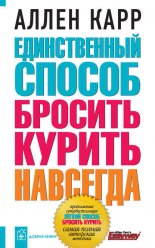Notice: Undefined variable: contentRead in /var/www/www-root/data/www/knizh.ru/funcs.php on line 681
Notice: Undefined variable: row in /var/www/www-root/data/www/knizh.ru/funcs.php on line 719
Notice: Trying to access array offset on value of type null in /var/www/www-root/data/www/knizh.ru/funcs.php on line 719
ïŋ― ïŋ― ïŋ―ïŋ―ïŋ―ïŋ―ïŋ―ïŋ―ïŋ―ïŋ―ïŋ―ïŋ―ïŋ―ïŋ―ïŋ―! ïŋ―ïŋ―ïŋ―ïŋ―ïŋ―ïŋ―ïŋ― ïŋ― ïŋ―ïŋ―ïŋ― ïŋ―ïŋ―ïŋ―ïŋ―ïŋ―ïŋ―ïŋ―ïŋ―ïŋ― Ōļïŋ―ïŋ―ïŋ― ïŋ―ïŋ―ïŋ―ïŋ―

Gest, Howard (2004). The Discovery of Microorganisms by Robert Hooke and Antoni van Leeuwenhoek, Fellows of the Royal Society. Notes and Records of the Royal Society of London, 58: 187ïŋ―201.
Gevers, Dirk, et al (2014). The Treatment-Naive Microbiome in New-Onset Crohnïŋ―s Disease. Cell Host & Microbe. 15: 382ïŋ―392.
Gibbons, Ann (2014). The Evolution of Diet. National Geographic, August.
Ginsberg, Alexandra, et al (2014). Synthetic Aesthetics: Investigating Synthetic Biologyïŋ―s Designs on Nature. MIT Press.
Goldenberg, J., et al (2013). Probiotics for the prevention of Clostridium difficile associated diarrhea in adults and children. Cochrane Database Systematic Reviews. 5: CD006095.
Greenblum, Sharon, et al (2013). Towards a predictive systems-level model of the human microbiome: progress, challenges, and opportunities. Current Opinion in Biotechnology, 24:810ïŋ―820.
Hagymasi, Kristina, et al (2014). Helicobacter pylori infection: New pathogenetic and clinical aspects. World Journal of Gastroenterology. 20: 6386ïŋ―6399.
Hanage, William (2014). Microbiome science needs a healthy dose of scepticism. Nature, 512: 247ïŋ―8.
Hickey, Roxana, et al (2012). Understanding vaginal microbiome complexity from an ecological perspective. Translational Research, 160: 267ïŋ―282.
Hornick, R., et al (1970). Typhoid Fever: Pathogenesis and Immunologic Control. New England Journal of Medicine, 283: 739ïŋ―746.
Hospodsky, D., et al (2014). Hand bacterial communities vary across two different human populations. Microbiology, 160:1144ïŋ―1152.
House P. K., et al (2011). Predator cat odors activate sexual arousal pathways in brains of Toxoplasma gondii infected rats. PLoS One, 6: e23277.
Hsiao, Elaine, et al (2013). Microbiota Modulate Behavioral and Physiological Abnormalities Associated with Neurodevelopmental Disorders. Cell, 155: 1451ïŋ―1463.
Human Microbiome Project Consortium (2012). A framework for human microbiome research. Nature, 486: 215ïŋ―219.
Human Microbiome Project Consortium (2012). Structure, function and diversity of the healthy human microbiome. Nature, 486: 207ïŋ―214.
Jackson, Mark (2006). Allergy: The History of a Modern Malady. Reaktion Books.
Jeurink, P., et al (2013). Human milk: aïŋ―source of more life than we imagine. Beneficial Microbes, 4: 17ïŋ―30.
Joyce, Christopher (2014). Soil Doctors Hit Pay Dirt In Manhattanïŋ―s Central Park. http://www.npr.org/2014/10/02/353066730.
Kankainen, M., et al (2009). Comparative genomic analysis of Lactobacillus rhamnosus GG reveals pili containing a human-mucus binding protein. Proceedings of the National Academy of Sciences. 106:17193ïŋ―17198.
Kaptchuk, Ted, et al (2010). Placebos without Deception: A Randomised Controlled Trial in Irritable Bowel Syndrome. PloS One. 0015591.
Karlsson, F. H., et al (2014). Metagenomic Data Utilization and Analysis (MEDUSA) and Construction of a Global Gut Microbial Gene Catalogue. PLoS Comput Biol 10: e1003706.
Karr, Jonathan, et al (2012). A Whole-Cell Computational Model Predicts Phenotype from Genotype. Cell, 150:398ïŋ―401.
Keeney, Kristie, et al (2014). Effects of Antibiotics on Human Microbiota and Subsequent Disease. Annual Review of Microbiology. 68: 217ïŋ―35.
Khanna, Sahil, et al (2014). Clinical Evaluation of SERïŋ―90, a Rationally Designed, Oral Microbiome-Based Therapeutic for the Treatment of Recurrent Clostridium difficile. ïŋ―ïŋ―ïŋ―ïŋ―ïŋ―ïŋ― ïŋ―ïŋ―ïŋ―ïŋ―ïŋ―ïŋ―ïŋ―ïŋ― ïŋ―ïŋ― ïŋ―ïŋ―ïŋ―ïŋ―ïŋ―ïŋ―ïŋ―ïŋ―ïŋ―ïŋ―ïŋ― ïŋ―ïŋ―ïŋ―ïŋ―ïŋ―ïŋ―ïŋ―ïŋ―ïŋ―ïŋ―ïŋ―ïŋ― ïŋ―ïŋ―ïŋ―ïŋ―ïŋ―ïŋ―ïŋ―ïŋ―ïŋ―ïŋ―ïŋ―ïŋ―ïŋ―ïŋ―ïŋ―ïŋ―ïŋ―ïŋ―ïŋ―ïŋ―ïŋ―ïŋ― ïŋ―ïŋ―ïŋ―ïŋ―ïŋ―ïŋ―ïŋ―ïŋ―ïŋ―ïŋ―. http://www.gastro.org/news/articles/2014/08/14/new-frontiers-of-fecal-microbiota-transplantation.
Klein, Jan (1982). Immunology: The Science of Self ïŋ― Nonself Discrimination. John Wiley.
Koenig, Amy, et al (2010). Succession of microbial consortia in the developing infant gut microbiome. Proceedings of the National Academy of Sciences, 1000081107.
Kort, Remco, et al (2014). Shaping the oral microbiota through intimate kissing. Microbiome, 2:41.
Kotula, Jonathan, et al (2014). Programmable bacteria detect and record an environmental signal in the mammalian gut. Proceedings of the National Academy of Sciences, 111: 4838ïŋ―4843.
Kroes, I. et al (1999). Bacterial diversity within the human subgingival crevice. Proceedings of the National Academy of Sciences. 96: 14547ïŋ―52.
La Rosa, Patricio, et al (2014). Patterned progression of bacterial populations in the premature infant gut. Proceedings of the National Academy of Sciences, 111:12522ïŋ―12527.
Lax, S., et al (2014). Longitudinal analysis of microbial interaction between humans and the indoor environment. Science, 345: 1048ïŋ―1052.
Lecuit, Marc and Marc Eloit (2013). The human virome: new tools and new concepts. Trends in Microbiology, 21: 510ïŋ―515.
Lederberg, Joshua (2000). Infectious History. Science, 288: 287ïŋ―293.
Lee, Stewart (2010). How I Escaped my Certain Fate ïŋ― The Life and Deaths of a Stand-Up Comedian. Faber.
Lee, Yun, and Sarkis Mazmanian (2010). Has the Microbiota Played a Critical Role in the Evolution of the Adaptive Immune System? Science, 330: 1195568.
Ley, R., et al (2005). Obesity alters gut microbial ecology. Proceedings of the National Academy of Sciences, 102: 11070ïŋ―11075.
Li, Juanha, et al (2014). An Integrated Catalogue of reference genes in the human gut microbiome. Nature Biotechnology, ïŋ―ïŋ―ïŋ―ïŋ―ïŋ―ïŋ―ïŋ―ïŋ― ïŋ―ïŋ― ïŋ―ïŋ―ïŋ―ïŋ―ïŋ― 6 ïŋ―ïŋ―ïŋ―ïŋ― 2014 ïŋ―ïŋ―ïŋ―ïŋ―.
Loscalzo, Joseph (2013). Gut Microbiota, the Genome, and Diet in Atherogenesis. New England Journal of Medicine, 368:17.
Luckey, T. (1972). Introduction to intestinal microecology. American Journal of Clinical Nutrition. 25: 1292ïŋ―1294.
Lyte, Mark (2014). Microbial endocrinology: Host ïŋ― microbiota neuroendocrine interactions. Gut Microbes, 5: 28682.
Lyte, Mark, and Primrose Freestone, eds (2010). Microbial Endocrinology: Interkingdom Signaling in Infectious Disease and Health. Springer.
Martin, Emily (1994). Flexible Bodies: The role of immunity in American culture from the days of polio to the age of AIDS. Beacon Press.
Matzinger, P. (2002). The danger model: aïŋ―renewed sense of self. Science, 296: 301ïŋ―305.
Maxman, A. (2013). Designing for microscopic life in the great indoors (Interview with Jessica Green). New Scientist, 20 July.
Maynard, Craig, et al (2012). Reciprocal interactions of the intestinal microbiota and immune system. Nature, 489: 231ïŋ―241.
Mazmanian, S., et al (2005). An immunomodulatory molecule of symbiotic bacteria directs maturation of the host immune system. Cell, 122: 107ïŋ―118.
Mazmanian, Sarkis, et al (2008). A microbial symbiosis factor prevents intestinal inflammatory disease. Nature, 453: 620ïŋ―625.
Mazmanian, Sarkis (2009). Microbial health factor. The Scientist, August 1.
McCord, Aleia et al (2013). Faecal microbiomes of non-human primates in Western Uganda reveal species-specific communities largely resistant to habitat perturbation. American Journal of Primatology, 22238.
McFall-Ngai, Margaret (2007). Care for the community. Nature, 445: 153.
McFall-Ngai, Margaret, et al (2013). Animals in a bacterial world, a new imperative for the life sciences. Proceedings of the National Academy of Sciences, 110, 3229ïŋ―3236.
Minot, S., et al (2013). Rapid evolution of the human gut virome. Proceedings of the National Academy of Sciences, 110: 12450ïŋ―12455.
Modi, Sheetal (2013). Antibiotic treatment expands the resistance reservoir and ecological network of the phage metagenome. Nature, 499: 219ïŋ―223.
Moeller, Andrew, et al (2012). Chimpanzees and humans harbour compositionally similar gut enterotypes. Nature Communications, 3: 1179.
Moeller, Andrew, et al (2014). Rapid changes in the gut microbiome during human evolution. Proceedings of the National Academy of Sciences, Nov 3. doi: 10.1073/pnas. 1419136111.
Montgomery, Scott (1996). The Scientific Voice. Guilford Press.
Morrow, L., et al (2010). Probiotic prophylaxis of ventilator-associated pneumonia: aïŋ―blinded, randomized, controlled trial. American Journal of Respiratory & Critical Care Medicine. 182: 1058ïŋ―1064.
Naik, Shruti, et al (2012). Compartmentalized Control of Skin Immunity by Resident Commensals. Science, 337: 1115ïŋ―1119.
Nakatsuji, Teruaki, et al (2013). The microbiome extends to subepidermal compartments of normal skin. Nature Communications, 4. Feb 5.
Nelson, David, et al (2012) Bacterial Communities of the Coronal Sulcus and Distal Urethra of Adolescent Males. PloS One, 7: e36298.
Nerlich, Brigitte, and Lina Hellsten (2009). Beyond the human genome: microbes, metaphors and what it means to be human in an interconnected post-genomic world. New Genetics and Society, 28: 19ïŋ―36.
Noble, Denis (2006). The Music of Life: Biology Beyond Genes. Oxford University Press.
Norris, Vic, et al (2013). Hypothesis: bacteria control host appetites. Journal of Bacteriology, 195:411.
Oïŋ―Malley, Maureen (2014). Philosophy of Microbiology. Oxford University Press.
Ogilvie, Lesley, et al (2013). Genome signature-based dissection of human gut metagenomes to extract subliminal viral sequences. Nature Communications, 3420.
Okada, H., et al (2010). The ïŋ―hygiene hypothesisïŋ― for autoimmune and allergic diseases: an update. Clinical & Experimental Immunology, 160: 1ïŋ―9.
Paxson, Heather (2008). Post-Pasteurian cultures: The microbiopolitics of raw-milk cheese in the United States. Cultural Anthropology, 23: 15ïŋ―47.
Petrof, E., et al (2013). Microbial ecosystems therapeutics: aïŋ―new paradigm in medicine? Beneficial Microbes 4: 53ïŋ―65.
Petrof, E., et al (2013). Stool substitute transplant therapy for the eradication of C. difficile infection: RePOOPulating the gut. Microbiome 1:3.
Pollan, Michael (2006). The Omnivoreïŋ―s Dilemma: A Natural History of Four Meals. Penguin.
Pradeu, Thomas (2012). The Limits of the Self: Immunology and Biological Identity. Oxford University Press.
Pradeu, Thomas, and Edwin Cooper (2012). The danger theory: 20 years later. Frontiers in Immunology, 3: 287.
Pray, Leslie, et al (2012). The Human Microbiome, Diet and Health: Workshop Summary. Institute of Medicine, US.
Price, Lance (2010). The Effects of Circumcision on the Penis Microbiome. PloS One, 5: e8422.
Pride, David, et al (2012). Evidence of a robust resident bacteriophage population revealed through analysis of the human salivary genome. ISME Journal, 6: 915ïŋ―926.
Ravel, J., et al (2011). Vaginal microbiome of reproductive-age women. Proceedings of the National Academy of Sciences. 108 Suppl 1:4680ïŋ―7.
Relman, David (2012). The human microbiome: ecosystem resilience and health. Nutrition Reviews, 70: S2 ïŋ― S9.
Relman, David, et al (2009). Microbial Evolution and Co-Adaptation ïŋ― A Tribute to the Life and Scientific Legacies of Joshua Lederberg. National Academy of Sciences, US.
Richmond, Ben (2014). Cola-flavoured Genitals, and Other Potential Uses for Microbiome Hacking. http://motherboard.vice.com September 11.
Ridaura, V., et al (2013). Gut microbiota from twins discordant for obesity modulate metabolism in mice. Science, 341: 1241214.
Roach, Mary (2013). Gulp: Adventures in the Alimentary Canal. Oneworld.
Rook, Graham (2012). A Darwinian view of the Hygiene or ïŋ―Old Friendsïŋ― hypothesis. Microbe, 7: 173ïŋ―180.
Rook, Graham (2013). Regulation of the immune system by biodiversity from the natural environment: An ecosystem service essential to health. Proceedings of the National Academy of Sciences, 110: 18360ïŋ―18367.
Rosebury, Theodor (1969). Life on Man. Secker and Warburg.
Sachs, Jessica Snyder (2007). Good Germs, Bad Germs: Health and Survival in a Bacterial World. Hill and Wang.
Saey, Tina (2014). Hereïŋ―s the poop on getting your gut microbiome analysed. www.sciencenews.org June 17.
Salter, Susannah, et al (2014). Reagent and laboratory contamination can critically impact sequence-based microbiome analysis. BMC Biology, 12: 87.
Sanford, James, and Richard Gallo (2013). Functions of the skin microbiota in health and disease. Seminars in Immunology, 25: 370ïŋ―377.
Scheuring, Istvan, and Douglas Wu (2012). How to assemble a beneficial microbiome in three easy steps. Ecology Letters, 15: 1300ïŋ―1307.
Schluter, Jonas, and Kevin Foster (2012). The evolution of mutualism in gut microbiota via epithelial selection. PLoS Biology, 10: e1001424.
Schnorr, Stephanie, et al (2014). Gut microbiome of the Hadza hunter-gatherers. Nature Communications, 5: 3654.
Scott, Julia (2014). My No-Soap, No-Shampoo, Bacteria-Rich Hygiene Experiment. New York Times Magazine, May 22.
Seekatz, Anna, et al (2014). Recovery of the Gut Microbiome following Fecal Microbiota Transplantation. mBio, 5: e00893.
Shaikh-Lesko, Rina (2014). Visualising the ocular microbiome. The Scientist, May 12.
Shanahan, Fergus, and Eamonn Quigley, (2014). Modification of the gut microbiome to maintain health or treat disease. Gastroenterology, 146: 1554ïŋ―1563.
Simons, Jake (2014). Biodesign: Why the future of our cities is soft and hairy. http://edition.cnn.com/2014/08/27/tech/innovation/biodesign-why-the-future-of-our-cities-is-soft-and-hairy.
Singer, Emily (2013). Our bodies, our data. Quanta Magazine online. October. http://www.simonsfoundation.org/quanta/20131007-our-bodies-our-data.
Singh, Nagendra, et al (2014). Activation of Gpr109a, receptor for niacin and the commensal metabolite butyrate, suppresses colonic inflammation and carcinogenesis. Immunity, 40: 128ïŋ―139.
Smith, Mark, et al (2014). How to regulate faecal transplants. Nature, 506: 290ïŋ―91.
Smith, Peter (2014). Is your body mostly microbes? Actually, we have no idea. Boston Globe, September 14.
Smith, Peter (2014). A new kind of transplant bank. New York Times, Feb 17.
Sommer, Felix, and Fredrik Bckhed (2013). The gut microbiota ïŋ― masters of hst development and physiology. Nature Reviews Microbiology, 11: 227ïŋ―238.
Song, Se Jin, et al (2013). How delivery mode and feeding can shape the bacterial community in the infant gut. Canadian Medical Association Journal, 185: 373ïŋ―374.
Song, Se Jin, et al (2013). Cohabiting family members share microbiota with one another and with their dogs. eLife, 2: e00458.
Sonnenberg, Justin, et al (2004). Getting a grip on things: how do communities of bacterial symbionts become established in our intestine? Nature Immunology, 5:569ïŋ―573.
Staley, James and Allen Konopka (1985). Measurement of in situ activities of nonphotosynthetic microorganisms in aquatic and terrestrial habitats. Annual Review of Microbiology, 39: 321ïŋ―46.
Sterling, Bruce (2002). Tomorrow Now: Envisioning the Next Fifty Years. Random House.
Sullivan, et al (2011). Clinical efficacy of a specifically targeted anti-microbial peptide mouth rinse: targeted elimination of Streptococcus mutans and prevention of demineralization. Caries Research. 45: 415ïŋ―428.
Tang, W., et al (2013). Intestinal microbial metabolism of phosphatidylcholine and cardiovascular risk. New England Journal of Medicine, 368: 1575ïŋ―1584.
Thaiss, Christoph, et al (2014). Exploring new horizons in microbiome research. Cell, Host and Microbe. 15: 662ïŋ―667.
Tillisch, Kirsten, et al (2013). Consumption of fermented milk product with probiotic modulates brain activity. Gastroenterology, 144: 1394ïŋ―1401.
Tito, Raul (2012). Insights from characterizing extinct human gut microbiomes. PloS One. 7: e51146.
Tomes, Nancy (1998). The Gospel of Germs: Men, Women and the Microbe in American Life. Harvard University Press.
Turney, J. (2003). Lovelock and Gaia: Signs of Life. Icon Books.
Upbin, Bruce (2013). Yogurt is probiotic, why not your steering wheel? Forbes.com, 3/01/2013.
Van Nood, Els, et al (2013). Duodenal infusion of donor feces for recurrent Clostridium difficile. New England Journal of Medicine, 368: 407ïŋ―415.
Waller, John (2002). The Discovery of the Germ. Icon Books.
Wilcox, Christie (2013). Fake Feces To Treat Deadly Disease: Scientists Find They Can Make Sh*t Up. scientificamerican.com January 10.
Williams, Anna (2014). Your death microbiome could catch your killer // New Scientist, 27 August.
Wolf, M. (2014). Is there really such a thing as ïŋ―one healthïŋ―? Thinking about a more than human world from the perspective of cultural anthropology. Social Science & Medicine 2014.06.018.
Wopereis, Harm, et al (2014). The first thousand days ïŋ― intestinal microbiology of early life: establishing a symbiosis. Pediatric Allergy and Immunology, March.
Wrangham, Richard (2009). Catching Fire: How Cooking Made Us Human. Basic Books.
Wylie, Kristine, et al (2012). Emerging view of the human virome. Translational Research, 160: 283ïŋ―290.
Xiao, Shuiming, et al (2013). A gut microbiota-targeted dietary intervention for amelioration of chronic inflammation underlying metabolic syndrome. FEMS Microbial Ecology, 87: 357ïŋ―367.
Xu, Jian, and Jeffrey Gordon (2003). Honor thy symbionts. Proceedings of the National Academy of Sciences, 100: 10452ïŋ―10459.
Yatsuneko, Tanya, et al (2012). Human gut microbiome viewed across age and geography. Nature, 486: 222ïŋ―228.
Yong, Ed (2014). Searching for a ïŋ―Healthyïŋ― Microbiome. http://www.pbs.org/wgbh/nova/next/body/microbiome-diversity, 29 Jan 2014.
Youngster, Ilan, et al (2014). Oral, capsulized, frozen fecal microbiota transplantation for relapsing Clostridium difficile infection. Journal of the American Medical Association, Oct 11, doi: 10.1001/jama. 2014.13875.
Zhao, L. (2013). The gut microbiota and obesity: from correlation to causality. Nature Reviews Microbiology. 11: 639ïŋ―647.
Zimmer, Carl (2008). Microcosm: E. coli and the new science of life. Heinemann.
Zimmer, Carl (2011). A Planet of Viruses. University of Chicago Press.
Zipursky, Jonathan, et al (2012). Patient Attitudes Toward the Use of Fecal Microbiota Transplantation in the Treatment of Recurrent Clostridium difficile Infection. Clinical Infectious Diseases, 55: 1652ïŋ―1658.
ïŋ―ïŋ―ïŋ―ïŋ―ïŋ―ïŋ―ïŋ―ïŋ― ïŋ―ïŋ―ïŋ― ïŋ―ïŋ―ïŋ―ïŋ―ïŋ―ïŋ―ïŋ―ïŋ―ïŋ―ïŋ―ïŋ―ïŋ―ïŋ―ïŋ―ïŋ― ïŋ―ïŋ―ïŋ―ïŋ―ïŋ―ïŋ―
ïŋ―ïŋ―ïŋ―ïŋ―ïŋ―ïŋ―ïŋ―ïŋ―ïŋ―ïŋ― ïŋ―ïŋ―ïŋ―ïŋ―ïŋ―ïŋ―ïŋ―ïŋ―ïŋ―ïŋ―ïŋ―ïŋ― ïŋ―ïŋ―ïŋ―ïŋ―ïŋ―ïŋ―ïŋ―ïŋ―ïŋ―ïŋ― ïŋ―ïŋ―ïŋ―ïŋ―ïŋ―ïŋ―ïŋ―ïŋ― (ïŋ― ïŋ―ïŋ―ïŋ―ïŋ―ïŋ―ïŋ― ïŋ―ïŋ―ïŋ―ïŋ―ïŋ―ïŋ―ïŋ―) ïŋ―ïŋ―ïŋ―ïŋ―ïŋ―ïŋ― ïŋ―ïŋ―ïŋ―ïŋ―ïŋ―ïŋ―, ïŋ― ïŋ―ïŋ―ïŋ―ïŋ―ïŋ―ïŋ―ïŋ― ïŋ―ïŋ―ïŋ―ïŋ―ïŋ―ïŋ―ïŋ―ïŋ―ïŋ―ïŋ―ïŋ―ïŋ―ïŋ―ïŋ―ïŋ― ïŋ―ïŋ―ïŋ―ïŋ―ïŋ―ïŋ―ïŋ―ïŋ―ïŋ― ïŋ―ïŋ―ïŋ―ïŋ―ïŋ―ïŋ―ïŋ―ïŋ―ïŋ―ïŋ―ïŋ―ïŋ― ïŋ―ïŋ―ïŋ―ïŋ―ïŋ―ïŋ―ïŋ―. ïŋ― ïŋ―ïŋ―ïŋ―ïŋ― ïŋ―ïŋ―ïŋ―ïŋ―ïŋ― ïŋ―ïŋ―ïŋ―ïŋ―ïŋ―ïŋ― ïŋ―ïŋ―ïŋ―-ïŋ―ïŋ―ïŋ―ïŋ―ïŋ― ïŋ―ïŋ―ïŋ―ïŋ―ïŋ―ïŋ―ïŋ―ïŋ― ïŋ―ïŋ―ïŋ―ïŋ―ïŋ―ïŋ―ïŋ―ïŋ― ïŋ―ïŋ― ïŋ―ïŋ―, ïŋ―ïŋ―ïŋ― ïŋ―ïŋ―ïŋ―ïŋ―ïŋ―ïŋ―ïŋ―ïŋ―ïŋ― ïŋ―ïŋ― ïŋ―ïŋ―ïŋ―ïŋ―ïŋ―ïŋ― ïŋ― ïŋ―ïŋ―ïŋ―ïŋ―ïŋ―ïŋ―ïŋ―ïŋ― ïŋ―ïŋ―ïŋ―ïŋ―ïŋ―ïŋ―ïŋ―ïŋ―ïŋ―ïŋ―ïŋ―. ïŋ―ïŋ―ïŋ―ïŋ―ïŋ― ïŋ―ïŋ―ïŋ―ïŋ―ïŋ―ïŋ―ïŋ―ïŋ―ïŋ―ïŋ― ïŋ―ïŋ―ïŋ―ïŋ― ïŋ―ïŋ―ïŋ―ïŋ―ïŋ―ïŋ―ïŋ―ïŋ―ïŋ―ïŋ― ïŋ―ïŋ―ïŋ―ïŋ―ïŋ―ïŋ―ïŋ―ïŋ― ïŋ―ïŋ―ïŋ―ïŋ―ïŋ―ïŋ―ïŋ―ïŋ―ïŋ―ïŋ―ïŋ― ïŋ―ïŋ―ïŋ―ïŋ―ïŋ― ïŋ―ïŋ―ïŋ―ïŋ―ïŋ―ïŋ―ïŋ―ïŋ―ïŋ―ïŋ―ïŋ― ïŋ―ïŋ―ïŋ―ïŋ―ïŋ―ïŋ―ïŋ―ïŋ―ïŋ―ïŋ―, ïŋ― ïŋ―ïŋ― ïŋ―ïŋ―ïŋ―ïŋ―ïŋ― ïŋ―ïŋ―ïŋ―ïŋ―ïŋ―ïŋ―ïŋ―ïŋ―ïŋ―ïŋ― ïŋ―ïŋ―ïŋ―ïŋ―ïŋ―ïŋ―ïŋ―.
ïŋ―ïŋ―ïŋ―ïŋ―ïŋ―ïŋ―ïŋ―, ïŋ―ïŋ―ïŋ―ïŋ―ïŋ―ïŋ― ïŋ―ïŋ―ïŋ―ïŋ―ïŋ―ïŋ―ïŋ―, ïŋ―ïŋ―ïŋ― ïŋ―ïŋ―ïŋ―ïŋ―ïŋ― ïŋ―ïŋ―ïŋ―ïŋ―ïŋ―ïŋ―ïŋ―ïŋ― ïŋ―ïŋ―ïŋ―ïŋ― ïŋ―ïŋ―ïŋ―ïŋ―ïŋ―ïŋ―ïŋ―ïŋ―ïŋ―ïŋ―ïŋ―ïŋ―ïŋ― ïŋ―ïŋ―ïŋ―ïŋ―ïŋ―ïŋ―ïŋ― ïŋ―ïŋ―ïŋ―ïŋ―ïŋ―ïŋ― ïŋ―ïŋ―ïŋ―ïŋ―ïŋ―, ïŋ―ïŋ―ïŋ―ïŋ―ïŋ―ïŋ―ïŋ― ïŋ― ïŋ―ïŋ― ïŋ―ïŋ―ïŋ―ïŋ―ïŋ―ïŋ―ïŋ―. ïŋ― ïŋ―ïŋ―ïŋ―ïŋ― ïŋ―ïŋ―ïŋ― ïŋ―ïŋ―ïŋ―ïŋ―ïŋ―ïŋ―ïŋ―ïŋ― ïŋ―ïŋ―ïŋ―ïŋ―ïŋ― ïŋ―ïŋ―ïŋ―ïŋ―ïŋ― ïŋ―ïŋ―ïŋ―ïŋ―ïŋ―ïŋ―ïŋ―ïŋ―ïŋ―ïŋ― ïŋ―ïŋ―ïŋ―ïŋ―ïŋ―ïŋ―ïŋ―ïŋ―ïŋ―ïŋ― ïŋ― ïŋ―ïŋ―ïŋ―ïŋ―ïŋ―ïŋ―ïŋ―ïŋ― ïŋ― ïŋ―ïŋ―ïŋ―ïŋ―ïŋ―ïŋ―ïŋ―ïŋ― ïŋ―ïŋ―ïŋ―ïŋ―ïŋ―ïŋ―ïŋ―ïŋ―, ïŋ―ïŋ―ïŋ― ïŋ―ïŋ―ïŋ―ïŋ―ïŋ―ïŋ―ïŋ―ïŋ―ïŋ―ïŋ―ïŋ―ïŋ―. ïŋ―ïŋ―ïŋ―ïŋ―ïŋ― ïŋ―ïŋ―ïŋ―ïŋ―, ïŋ―ïŋ―ïŋ―ïŋ―ïŋ―ïŋ―ïŋ―ïŋ―ïŋ―ïŋ― ïŋ― ïŋ―ïŋ―ïŋ―ïŋ― ïŋ―ïŋ―ïŋ―ïŋ―ïŋ― ïŋ―ïŋ―ïŋ―ïŋ―ïŋ―ïŋ―ïŋ―ïŋ― ïŋ― ïŋ―ïŋ―ïŋ―ïŋ―ïŋ― ïŋ―ïŋ―ïŋ―ïŋ―ïŋ―ïŋ― ïŋ―ïŋ―ïŋ―ïŋ―ïŋ―ïŋ―. ïŋ―ïŋ―ïŋ―ïŋ―ïŋ―ïŋ―ïŋ―ïŋ―ïŋ―ïŋ―ïŋ―ïŋ― ïŋ―ïŋ―ïŋ―ïŋ―ïŋ―ïŋ― ïŋ―ïŋ―ïŋ―ïŋ―ïŋ―ïŋ―ïŋ―ïŋ―ïŋ―ïŋ― ïŋ― ïŋ― ïŋ―ïŋ―ïŋ―ïŋ―ïŋ―ïŋ―ïŋ―ïŋ― ïŋ―ïŋ―ïŋ―ïŋ―ïŋ―ïŋ― ïŋ―ïŋ―ïŋ―ïŋ―ïŋ―ïŋ―ïŋ―, ïŋ―ïŋ―ïŋ―ïŋ―ïŋ―ïŋ―ïŋ―ïŋ―ïŋ―ïŋ―ïŋ―ïŋ― ïŋ―ïŋ―ïŋ―ïŋ―ïŋ―ïŋ―ïŋ― ïŋ― ïŋ―ïŋ―ïŋ―ïŋ―ïŋ―, ïŋ― ïŋ― ïŋ―ïŋ―ïŋ―ïŋ―ïŋ―ïŋ―ïŋ―ïŋ―ïŋ―ïŋ―ïŋ―ïŋ―ïŋ―ïŋ―ïŋ―ïŋ―ïŋ―ïŋ― ïŋ―ïŋ―ïŋ―ïŋ―ïŋ―ïŋ―ïŋ―ïŋ―ïŋ―ïŋ―ïŋ― ïŋ―ïŋ―ïŋ―ïŋ―ïŋ―ïŋ―ïŋ―ïŋ―ïŋ―, ïŋ― ïŋ― ïŋ―ïŋ―ïŋ―ïŋ―ïŋ―ïŋ―ïŋ―ïŋ―ïŋ―ïŋ―ïŋ―ïŋ―ïŋ―, ïŋ―ïŋ―ïŋ―ïŋ―ïŋ―ïŋ―ïŋ―ïŋ―ïŋ―ïŋ―ïŋ― ïŋ―ïŋ―ïŋ―ïŋ―ïŋ―ïŋ―ïŋ―ïŋ―ïŋ―ïŋ―ïŋ―, ïŋ―ïŋ―ïŋ―ïŋ―ïŋ―ïŋ―ïŋ―ïŋ―ïŋ― ïŋ―ïŋ―ïŋ―ïŋ―ïŋ―ïŋ―ïŋ―ïŋ―, ïŋ―ïŋ―ïŋ―ïŋ―ïŋ―ïŋ―ïŋ―ïŋ― ïŋ―ïŋ― ïŋ―ïŋ―ïŋ―ïŋ― ïŋ―ïŋ―ïŋ―ïŋ―ïŋ―ïŋ―ïŋ―ïŋ―ïŋ―ïŋ― ïŋ― ïŋ―ïŋ―ïŋ―ïŋ―ïŋ―ïŋ―ïŋ―ïŋ―ïŋ―ïŋ―ïŋ―ïŋ― ïŋ―ïŋ―ïŋ―ïŋ―ïŋ― ïŋ―ïŋ―ïŋ―ïŋ―ïŋ―ïŋ―ïŋ―ïŋ―ïŋ― ïŋ―ïŋ―ïŋ―ïŋ―ïŋ―ïŋ―ïŋ―ïŋ―ïŋ―ïŋ―ïŋ―ïŋ―ïŋ― ïŋ― ïŋ―ïŋ―ïŋ―, ïŋ―ïŋ―ïŋ― ïŋ―ïŋ―ïŋ―ïŋ―ïŋ― ïŋ―ïŋ―ïŋ―ïŋ―ïŋ―ïŋ―ïŋ―ïŋ―ïŋ―ïŋ―ïŋ―ïŋ― ïŋ―ïŋ―ïŋ―ïŋ―ïŋ―ïŋ― ïŋ―ïŋ―ïŋ―ïŋ―ïŋ―ïŋ―ïŋ―ïŋ―ïŋ―ïŋ―. ïŋ―ïŋ―ïŋ― ïŋ―ïŋ―ïŋ―ïŋ―ïŋ―ïŋ―ïŋ― ïŋ― ïŋ―ïŋ―ïŋ―ïŋ―ïŋ―ïŋ―ïŋ―ïŋ―ïŋ― ïŋ―ïŋ―ïŋ―ïŋ―ïŋ―ïŋ―ïŋ―ïŋ― ïŋ―ïŋ―ïŋ―ïŋ―ïŋ―ïŋ―ïŋ― ïŋ―ïŋ―ïŋ―ïŋ―ïŋ―ïŋ―ïŋ―ïŋ― Science ïŋ― Nature, ïŋ― ïŋ―ïŋ―ïŋ―ïŋ―ïŋ― ïŋ―ïŋ―ïŋ―ïŋ―ïŋ―ïŋ―ïŋ―ïŋ―ïŋ―ïŋ―ïŋ―ïŋ―ïŋ―ïŋ―ïŋ― ïŋ― ïŋ―ïŋ―ïŋ―ïŋ―ïŋ―ïŋ―ïŋ―ïŋ―ïŋ―ïŋ―ïŋ―ïŋ―ïŋ―ïŋ― Scientific American.
ïŋ―ïŋ―ïŋ―ïŋ―ïŋ― ïŋ―ïŋ―ïŋ―ïŋ―ïŋ―ïŋ―ïŋ―ïŋ―ïŋ― ïŋ―ïŋ―ïŋ―ïŋ―ïŋ―ïŋ― ïŋ―ïŋ―ïŋ―ïŋ―ïŋ―ïŋ―ïŋ―ïŋ―ïŋ―ïŋ―ïŋ―ïŋ―ïŋ―ïŋ―ïŋ― ïŋ―ïŋ―ïŋ―ïŋ―ïŋ―ïŋ―ïŋ―ïŋ―ïŋ―ïŋ―ïŋ―ïŋ― ïŋ― ïŋ―ïŋ―ïŋ―ïŋ― ïŋ―ïŋ―ïŋ―ïŋ―ïŋ―ïŋ―ïŋ― ïŋ―ïŋ―ïŋ―ïŋ―ïŋ― ïŋ―ïŋ―ïŋ―ïŋ―ïŋ―ïŋ―ïŋ―ïŋ―ïŋ―ïŋ―ïŋ― ïŋ― ïŋ―ïŋ―ïŋ―ïŋ―. ïŋ―ïŋ―ïŋ―, ïŋ―ïŋ―ïŋ―ïŋ―ïŋ― ïŋ―ïŋ―ïŋ―ïŋ―ïŋ―ïŋ―ïŋ―ïŋ― ïŋ―ïŋ―ïŋ― ïŋ―ïŋ―ïŋ―ïŋ― ïŋ―ïŋ―ïŋ―ïŋ―ïŋ― ïŋ―ïŋ―ïŋ―, ïŋ―ïŋ―ïŋ―ïŋ―ïŋ― ïŋ―ïŋ―ïŋ―ïŋ―ïŋ―ïŋ―ïŋ― (Ed Yong, ïŋ―Not Exactly Rocket Scienceïŋ―) ïŋ― ïŋ―ïŋ―ïŋ―ïŋ―ïŋ―ïŋ―ïŋ―ïŋ―ïŋ―ïŋ― ïŋ―ïŋ―ïŋ―ïŋ―ïŋ― ïŋ―ïŋ―ïŋ―ïŋ―ïŋ―ïŋ―ïŋ― ïŋ―ïŋ―ïŋ―ïŋ―ïŋ―ïŋ―ïŋ―ïŋ― ïŋ―ïŋ―ïŋ―ïŋ―ïŋ―ïŋ― (Carl Zimmer, ïŋ―The Loomïŋ―) ïŋ―ïŋ―ïŋ―ïŋ―ïŋ―ïŋ―ïŋ―ïŋ―ïŋ― ïŋ―ïŋ―ïŋ―ïŋ―ïŋ―ïŋ―ïŋ―ïŋ―ïŋ―ïŋ―ïŋ―ïŋ― ïŋ―ïŋ―ïŋ―ïŋ―ïŋ―ïŋ― ïŋ―ïŋ―ïŋ―ïŋ―ïŋ―ïŋ―ïŋ―ïŋ―ïŋ― ïŋ―ïŋ―ïŋ―ïŋ―ïŋ―ïŋ―ïŋ―ïŋ―ïŋ― ïŋ― ïŋ―ïŋ―ïŋ―ïŋ―ïŋ― ïŋ―ïŋ―ïŋ―ïŋ―ïŋ―ïŋ―ïŋ―ïŋ―ïŋ―ïŋ―ïŋ―ïŋ― ïŋ―ïŋ―ïŋ―ïŋ―ïŋ―ïŋ―ïŋ―ïŋ―ïŋ―ïŋ―ïŋ―ïŋ―ïŋ―. ïŋ―ïŋ―ïŋ― ïŋ―ïŋ―ïŋ―ïŋ―ïŋ― ïŋ―ïŋ―ïŋ―ïŋ―ïŋ― ïŋ―ïŋ―ïŋ―ïŋ―ïŋ―ïŋ― ïŋ―ïŋ― ïŋ―ïŋ―ïŋ―ïŋ―ïŋ― National Geographic: http://phenomena.nationalgeographic.com/blog/not-exactly-rocket-science ïŋ― http://phenomena.nationalgeographic.com/blog/the-loom.
ïŋ―ïŋ―ïŋ―ïŋ―ïŋ― ïŋ―ïŋ―ïŋ―ïŋ―, ïŋ―ïŋ―ïŋ―ïŋ―ïŋ―ïŋ―ïŋ―ïŋ―ïŋ―ïŋ―ïŋ―ïŋ―ïŋ― ïŋ―ïŋ―ïŋ―ïŋ―ïŋ―ïŋ―ïŋ―ïŋ― ïŋ―ïŋ―ïŋ―ïŋ―ïŋ― ïŋ―ïŋ―ïŋ―ïŋ―ïŋ―ïŋ―ïŋ―ïŋ―ïŋ― ïŋ―ïŋ―ïŋ―ïŋ―ïŋ―ïŋ―ïŋ―ïŋ―ïŋ―ïŋ―ïŋ― ïŋ―ïŋ―ïŋ―ïŋ―ïŋ― ïŋ― ïŋ―ïŋ―ïŋ―ïŋ―ïŋ―ïŋ― ïŋ―ïŋ―ïŋ―ïŋ―ïŋ― (http://phylogenomics.blogspot.co.uk), ïŋ―ïŋ―ïŋ―ïŋ―ïŋ―ïŋ―ïŋ― ïŋ―ïŋ―ïŋ―, ïŋ―ïŋ―ïŋ―ïŋ―ïŋ―ïŋ―ïŋ―-ïŋ―ïŋ―ïŋ―ïŋ―ïŋ―ïŋ―ïŋ―ïŋ―ïŋ―ïŋ―ïŋ―ïŋ―ïŋ―ïŋ―ïŋ―, ïŋ―ïŋ―ïŋ―ïŋ―ïŋ―ïŋ―ïŋ―ïŋ―ïŋ―ïŋ― ïŋ―ïŋ―ïŋ―ïŋ―ïŋ―ïŋ―ïŋ―ïŋ― ïŋ― ïŋ―ïŋ―ïŋ―ïŋ―ïŋ―ïŋ―ïŋ―ïŋ―ïŋ―ïŋ―ïŋ―ïŋ―ïŋ―ïŋ―ïŋ―ïŋ―: ïŋ―ïŋ― ïŋ―ïŋ―ïŋ―ïŋ―ïŋ―ïŋ―ïŋ―ïŋ―ïŋ― ïŋ―ïŋ―ïŋ―ïŋ―ïŋ―ïŋ―ïŋ―ïŋ―ïŋ―ïŋ― ïŋ―ïŋ―ïŋ―ïŋ―ïŋ―ïŋ―ïŋ―ïŋ―ïŋ―ïŋ―ïŋ― ïŋ―ïŋ―ïŋ―ïŋ―ïŋ―ïŋ― ïŋ―ïŋ―ïŋ― ïŋ―ïŋ―ïŋ―ïŋ―ïŋ―ïŋ―ïŋ―ïŋ―ïŋ―ïŋ― ïŋ―ïŋ―ïŋ―ïŋ―ïŋ―ïŋ―ïŋ― ïŋ―ïŋ―ïŋ―ïŋ―ïŋ―ïŋ―ïŋ―ïŋ―ïŋ―ïŋ―.
ïŋ―ïŋ―ïŋ― ïŋ―ïŋ―ïŋ― ïŋ―ïŋ―ïŋ―ïŋ―ïŋ―ïŋ―ïŋ― ïŋ―ïŋ―ïŋ―ïŋ― ïŋ―ïŋ―ïŋ―ïŋ― ïŋ― ïŋ― ïŋ―ïŋ―ïŋ―ïŋ―ïŋ―ïŋ―ïŋ―ïŋ― ïŋ― ïŋ―ïŋ―ïŋ― ïŋ― ïŋ―ïŋ―ïŋ―ïŋ―ïŋ―ïŋ―ïŋ―ïŋ― ïŋ―ïŋ―ïŋ― (@MicrobiomDigest), ïŋ―ïŋ―ïŋ―ïŋ―ïŋ―ïŋ―ïŋ― ïŋ―ïŋ― ïŋ―ïŋ―ïŋ―ïŋ―ïŋ― http://www.microbiomedigest.com ïŋ―ïŋ―ïŋ―ïŋ―ïŋ―ïŋ―ïŋ―ïŋ―ïŋ― ïŋ―ïŋ―ïŋ―ïŋ―ïŋ―ïŋ― ïŋ―ïŋ―ïŋ―ïŋ―ïŋ― ïŋ―ïŋ―ïŋ―ïŋ―ïŋ―ïŋ―ïŋ―ïŋ―ïŋ― ïŋ― ïŋ―ïŋ―ïŋ―ïŋ―ïŋ― ïŋ―ïŋ―ïŋ―ïŋ―ïŋ― ïŋ―ïŋ―ïŋ―ïŋ―ïŋ―ïŋ― ïŋ― ïŋ―ïŋ―ïŋ―ïŋ―ïŋ―ïŋ―ïŋ―ïŋ―ïŋ―ïŋ―ïŋ―ïŋ―ïŋ―ïŋ―ïŋ―ïŋ― ïŋ―ïŋ―ïŋ―ïŋ―ïŋ―ïŋ―ïŋ―ïŋ―ïŋ―ïŋ―ïŋ―ïŋ―, ïŋ―ïŋ―ïŋ―ïŋ―ïŋ―ïŋ―ïŋ―ïŋ―ïŋ―ïŋ― ïŋ―ïŋ―ïŋ―ïŋ―ïŋ―ïŋ―ïŋ―ïŋ―ïŋ―ïŋ―ïŋ― ïŋ―ïŋ―ïŋ―ïŋ―ïŋ―ïŋ―ïŋ―ïŋ―ïŋ―ïŋ―ïŋ―ïŋ― ïŋ―ïŋ―ïŋ―ïŋ―ïŋ―ïŋ―ïŋ―ïŋ―ïŋ―ïŋ―ïŋ―ïŋ―. ïŋ―ïŋ―ïŋ―ïŋ―ïŋ―ïŋ―ïŋ―ïŋ―ïŋ― ïŋ―ïŋ―ïŋ―ïŋ―ïŋ―ïŋ―!
UNIVERSUM
ïŋ― ïŋ―ïŋ―ïŋ―ïŋ―ïŋ― ïŋ― ïŋ―ïŋ― ïŋ―ïŋ―ïŋ―ïŋ―ïŋ―ïŋ―ïŋ― ïŋ― ïŋ―ïŋ―ïŋ―ïŋ―ïŋ― ïŋ―ïŋ―ïŋ―ïŋ―ïŋ―ïŋ―ïŋ―ïŋ―ïŋ―ïŋ― ïŋ― ïŋ―ïŋ―ïŋ―ïŋ―ïŋ―ïŋ―ïŋ―ïŋ―ïŋ―ïŋ―ïŋ―
ïŋ―ïŋ―ïŋ―ïŋ―ïŋ―ïŋ―ïŋ―ïŋ―ïŋ―ïŋ―ïŋ―ïŋ―, ïŋ―ïŋ― ïŋ―ïŋ―ïŋ―ïŋ―: ïŋ―ïŋ―ïŋ―ïŋ―ïŋ―ïŋ―ïŋ― ïŋ―ïŋ―ïŋ―ïŋ―ïŋ―ïŋ―ïŋ―ïŋ― ïŋ―ïŋ―ïŋ―ïŋ―ïŋ―ïŋ―ïŋ―ïŋ― ïŋ―ïŋ―ïŋ―ïŋ―ïŋ― ïŋ―ïŋ―ïŋ―ïŋ―ïŋ― 4ïŋ―ïŋ―ïŋ― ïŋ―ïŋ―ïŋ―ïŋ―ïŋ― ïŋ―ïŋ―ïŋ―ïŋ―ïŋ―ïŋ― ïŋ―ïŋ―ïŋ―ïŋ―ïŋ―ïŋ―ïŋ―ïŋ―ïŋ―ïŋ―ïŋ―ïŋ― ïŋ― ïŋ―ïŋ―ïŋ―ïŋ―ïŋ―ïŋ―ïŋ―ïŋ―, ïŋ―ïŋ―ïŋ―ïŋ―ïŋ―ïŋ―ïŋ―, ïŋ―ïŋ―ïŋ―ïŋ―ïŋ―ïŋ―ïŋ―! ïŋ―ïŋ―ïŋ― ïŋ―ïŋ―ïŋ― ïŋ―ïŋ― ïŋ― ïŋ―ïŋ―ïŋ―ïŋ―ïŋ―ïŋ―ïŋ―, ïŋ―ïŋ―ïŋ―. ïŋ―ïŋ―ïŋ― ïŋ―ïŋ―ïŋ― ïŋ―ïŋ―ïŋ―ïŋ―ïŋ―ïŋ―ïŋ―ïŋ― ïŋ―ïŋ―ïŋ―ïŋ―ïŋ―ïŋ― ïŋ―ïŋ―ïŋ―ïŋ―ïŋ―ïŋ―ïŋ―ïŋ― ïŋ―ïŋ―, ïŋ―ïŋ―ïŋ― ïŋ―ïŋ―ïŋ―ïŋ―ïŋ―ïŋ― ïŋ―ïŋ―ïŋ―ïŋ―ïŋ―ïŋ―ïŋ―ïŋ― ïŋ―ïŋ―ïŋ―ïŋ―ïŋ―ïŋ―ïŋ―ïŋ―ïŋ―ïŋ―ïŋ―. ïŋ―ïŋ―ïŋ―ïŋ― ïŋ―ïŋ―ïŋ― ïŋ―ïŋ―ïŋ―ïŋ―ïŋ―ïŋ―ïŋ―ïŋ―ïŋ― ïŋ―ïŋ―ïŋ―ïŋ―ïŋ― ïŋ― ïŋ―ïŋ―ïŋ―ïŋ― ïŋ― ïŋ―ïŋ―ïŋ―ïŋ―ïŋ―ïŋ―ïŋ―ïŋ―, ïŋ―ïŋ― ïŋ―ïŋ―ïŋ―ïŋ―ïŋ―ïŋ―ïŋ― ïŋ― ïŋ―ïŋ―ïŋ―ïŋ―ïŋ―ïŋ―ïŋ―ïŋ―ïŋ―: ïŋ―ïŋ―ïŋ―ïŋ― ïŋ―ïŋ―ïŋ―ïŋ―ïŋ―ïŋ―ïŋ―ïŋ―ïŋ―ïŋ―ïŋ―ïŋ―ïŋ―ïŋ―ïŋ―ïŋ― ïŋ―ïŋ―ïŋ―ïŋ―ïŋ―ïŋ―ïŋ―ïŋ―ïŋ―, ïŋ―ïŋ―ïŋ―ïŋ―ïŋ―ïŋ―ïŋ―ïŋ― ïŋ―ïŋ―ïŋ―ïŋ―ïŋ―ïŋ―ïŋ― ïŋ―ïŋ―ïŋ―ïŋ―ïŋ―ïŋ―ïŋ―ïŋ― ïŋ―ïŋ―ïŋ― ïŋ―ïŋ―ïŋ―ïŋ― ïŋ― ïŋ―ïŋ― ïŋ―ïŋ―ïŋ―ïŋ― ïŋ―ïŋ―ïŋ―ïŋ―ïŋ― ïŋ― ïŋ―ïŋ―ïŋ―ïŋ―ïŋ―ïŋ―ïŋ―ïŋ―. ïŋ―ïŋ―ïŋ―ïŋ― ïŋ―ïŋ― ïŋ―ïŋ―ïŋ―ïŋ―ïŋ―-ïŋ―ïŋ― ïŋ―ïŋ―ïŋ―ïŋ― ïŋ―ïŋ―ïŋ―ïŋ―ïŋ―ïŋ―ïŋ―ïŋ―ïŋ―ïŋ― ïŋ―ïŋ―ïŋ―ïŋ―ïŋ― ïŋ―ïŋ―ïŋ―ïŋ―ïŋ―ïŋ―ïŋ―ïŋ― ïŋ―ïŋ―ïŋ―ïŋ―ïŋ―ïŋ―ïŋ―ïŋ―ïŋ― ïŋ― ïŋ―ïŋ―ïŋ―ïŋ―ïŋ― ïŋ―ïŋ―ïŋ―ïŋ―ïŋ―ïŋ―ïŋ―ïŋ―ïŋ―ïŋ―ïŋ―ïŋ―, ïŋ―ïŋ―ïŋ― ïŋ―ïŋ― ïŋ― ïŋ―ïŋ―ïŋ―ïŋ―ïŋ―ïŋ―ïŋ―ïŋ―ïŋ―ïŋ― ïŋ―ïŋ―ïŋ―ïŋ―ïŋ―ïŋ―ïŋ―ïŋ―ïŋ―ïŋ― ïŋ―ïŋ―ïŋ―ïŋ―ïŋ―ïŋ―ïŋ―ïŋ―ïŋ―ïŋ― ïŋ―ïŋ―ïŋ―ïŋ―ïŋ―,ïŋ―ïŋ― ïŋ― ïŋ―ïŋ―ïŋ― ïŋ―ïŋ―ïŋ―ïŋ―ïŋ―ïŋ―ïŋ―ïŋ― ïŋ―ïŋ―ïŋ―ïŋ―ïŋ―ïŋ―ïŋ―. ïŋ―ïŋ―ïŋ―ïŋ―ïŋ―ïŋ―ïŋ―ïŋ―ïŋ―ïŋ―ïŋ―ïŋ― ïŋ―ïŋ―ïŋ―ïŋ―ïŋ―ïŋ―ïŋ―ïŋ―ïŋ― ïŋ― ïŋ―ïŋ―ïŋ―ïŋ―ïŋ―, ïŋ―ïŋ―ïŋ―ïŋ―ïŋ―ïŋ―ïŋ―ïŋ―ïŋ― ïŋ―ïŋ―ïŋ―ïŋ―ïŋ―ïŋ―ïŋ―, ïŋ― ïŋ―ïŋ―ïŋ―ïŋ―ïŋ―ïŋ―ïŋ―ïŋ―ïŋ―ïŋ―ïŋ― ïŋ―ïŋ―ïŋ―ïŋ―ïŋ―ïŋ―ïŋ―ïŋ― ïŋ―ïŋ―ïŋ―ïŋ―ïŋ―ïŋ―ïŋ― ïŋ―ïŋ―ïŋ―ïŋ―ïŋ―ïŋ― ïŋ―ïŋ―ïŋ―ïŋ―ïŋ―ïŋ― ïŋ―ïŋ―ïŋ―ïŋ―ïŋ―ïŋ―ïŋ― ïŋ― ïŋ―ïŋ― ïŋ―ïŋ―ïŋ―ïŋ―ïŋ―ïŋ―ïŋ―ïŋ―ïŋ―ïŋ―ïŋ―.
ïŋ―ïŋ―ïŋ―ïŋ― Ōļïŋ―ïŋ―ïŋ―, ïŋ―ïŋ―ïŋ―ïŋ―ïŋ―ïŋ―ïŋ―ïŋ―ïŋ― ïŋ―ïŋ―ïŋ―ïŋ―ïŋ―ïŋ―ïŋ―ïŋ―ïŋ―ïŋ― ïŋ―ïŋ―ïŋ―ïŋ―ïŋ―ïŋ―ïŋ―ïŋ―ïŋ―ïŋ―ïŋ―ïŋ―ïŋ― ïŋ―ïŋ―ïŋ―ïŋ―ïŋ―, ïŋ―ïŋ―ïŋ―ïŋ―ïŋ―ïŋ―ïŋ―ïŋ―ïŋ―ïŋ―ïŋ―ïŋ― ïŋ― ïŋ―ïŋ―ïŋ―, ïŋ―ïŋ―ïŋ― ïŋ―ïŋ―ïŋ―ïŋ―ïŋ― ïŋ―ïŋ―ïŋ―ïŋ―ïŋ―ïŋ―ïŋ―ïŋ―ïŋ― ïŋ― ïŋ―ïŋ―ïŋ―ïŋ―ïŋ― ïŋ―ïŋ―ïŋ―ïŋ―ïŋ―ïŋ―ïŋ― ïŋ―ïŋ― ïŋ―ïŋ―ïŋ―ïŋ―ïŋ―ïŋ―ïŋ―ïŋ―ïŋ― ïŋ―ïŋ― ïŋ―ïŋ―ïŋ―ïŋ― ïŋ―ïŋ―ïŋ―ïŋ―ïŋ―. ïŋ―ïŋ―ïŋ―ïŋ―ïŋ―ïŋ―ïŋ―ïŋ― ïŋ―ïŋ―ïŋ― ïŋ―ïŋ―ïŋ―ïŋ―ïŋ―, ïŋ―ïŋ― ïŋ―ïŋ―ïŋ― ïŋ―ïŋ― ïŋ―ïŋ―ïŋ―ïŋ―ïŋ―ïŋ―ïŋ― ïŋ―ïŋ―ïŋ―ïŋ―ïŋ―ïŋ―ïŋ―ïŋ―ïŋ―ïŋ―ïŋ―ïŋ― ïŋ―ïŋ―ïŋ―ïŋ― ïŋ―ïŋ―-ïŋ―ïŋ―ïŋ―ïŋ―ïŋ―ïŋ―ïŋ―ïŋ―.
ïŋ―ïŋ― ïŋ― ïŋ―ïŋ―ïŋ―ïŋ― ïŋ―ïŋ―ïŋ―ïŋ― ïŋ―ïŋ― ïŋ―ïŋ―ïŋ―ïŋ―, ïŋ―ïŋ― ïŋ― ïŋ―ïŋ―ïŋ―ïŋ―ïŋ―ïŋ―ïŋ―ïŋ―ïŋ―ïŋ―ïŋ―ïŋ―ïŋ―.






